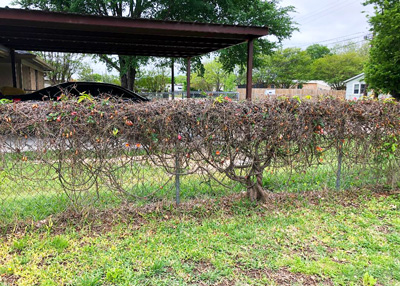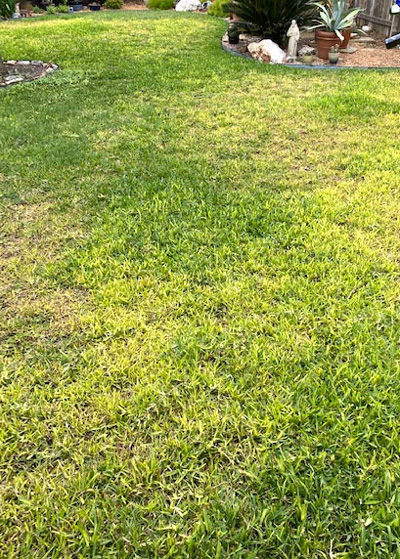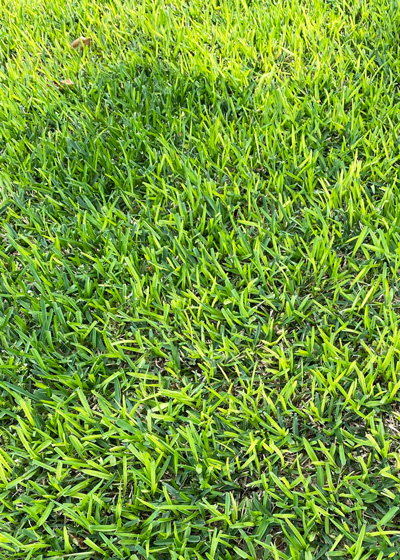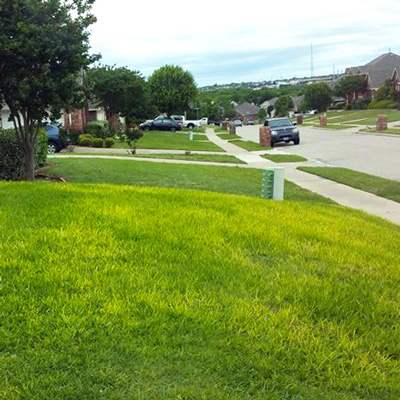Take All Taking Its Toll

You may have read that in one of my answers in the newspaper a week or two back. I’ve said it or written it dozens of times since warm weather started its comeback.

The frustrating thing is that TARR is difficult for home gardeners to identify with any certainty. It can be confused with a couple of other common St. Augustine problems.

Let me try to cut through the fog. Here’s how I answer.
How did your lawn look last September/October? If the answer is that it was awful – big areas dying, then I’m going to explain that Summer 2022 was one of the worst times I’ve ever seen for chinch bugs in St. Augustine turf. They arrived about the time the drought and hot weather hit, and many lawns never recovered. And those same lawns, not surprisingly, aren’t greening up this spring. In that case, it’s time to replant with new sod.

If the answer is that the lawn looked just fine all fall, then and only then will I suspect TARR. I’ll describe that it shows up in irregular patches, from 18 inches to the size of a card table or larger. Infected grass will be yellowish-green and nearby the grass may be completely healthy and vigorous. Given time, the sick grass will often die.
If you pull on grass infected with TARR you will see that it has suffered severe damage to its roots (hence the name of the disease). The roots will be stubby, rotted and black. Grub worms could also get the blame, but they eat the roots entirely, so there aren’t going to be blackened roots left behind.
Sometimes people will say this is brown patch, now referred to by plant pathologists as “large patch.” However, that fungus is more common in fall, and it affects only the leaf blades, not the runners and not the roots. The diseased blades pull loose easily, leaving the runners firmly attached to the roots and the ground.
Coping with TARR…
So, let’s assume you’ve narrowed it all down and you do think it’s take all root rot – TARR. What do you do?
• Be certain the area drains well. Waterlogged areas are more likely to develop the disease.
• Grass that has been weakened by cold is also more susceptible, but you can’t do anything about that so you just keep moving forward.

• Do anything you can to acidify the soil. The old remedy was to apply 1 inch of sphagnum peat moss across the lawn. That did seem to work, but pathologists told us it was more of a suppressive technique than a remedy. It also was expensive and laborious. I don’t recommend it any longer. You’ll read about adding ammonium sulfate fertilizer, but that’s a mine field, because that can promote gray leaf spot in summer. If you’re in East Texas and if TARR still manages to appear, avoid liming your soil.
• Fungicides will help prevent outbreaks if applied early. They may even help bring them back under control once grass is infected. Azoxystrobin has been highly recommended to me by a plant pathologist who has done pioneering research on this disease.
I hope this is of help as you fight off yet another problem for one of our most popular turfgrasses in Texas. St. Augustine just doesn’t need any more troubles.
